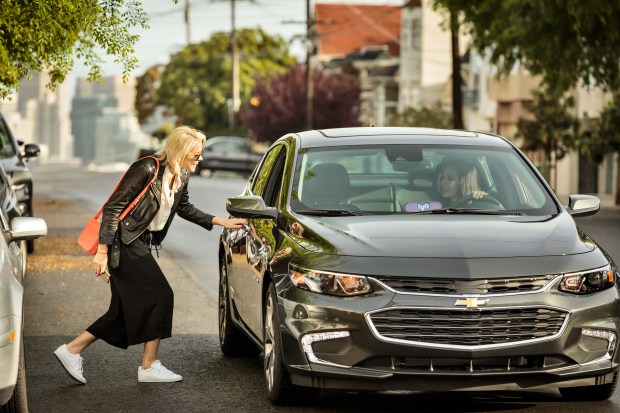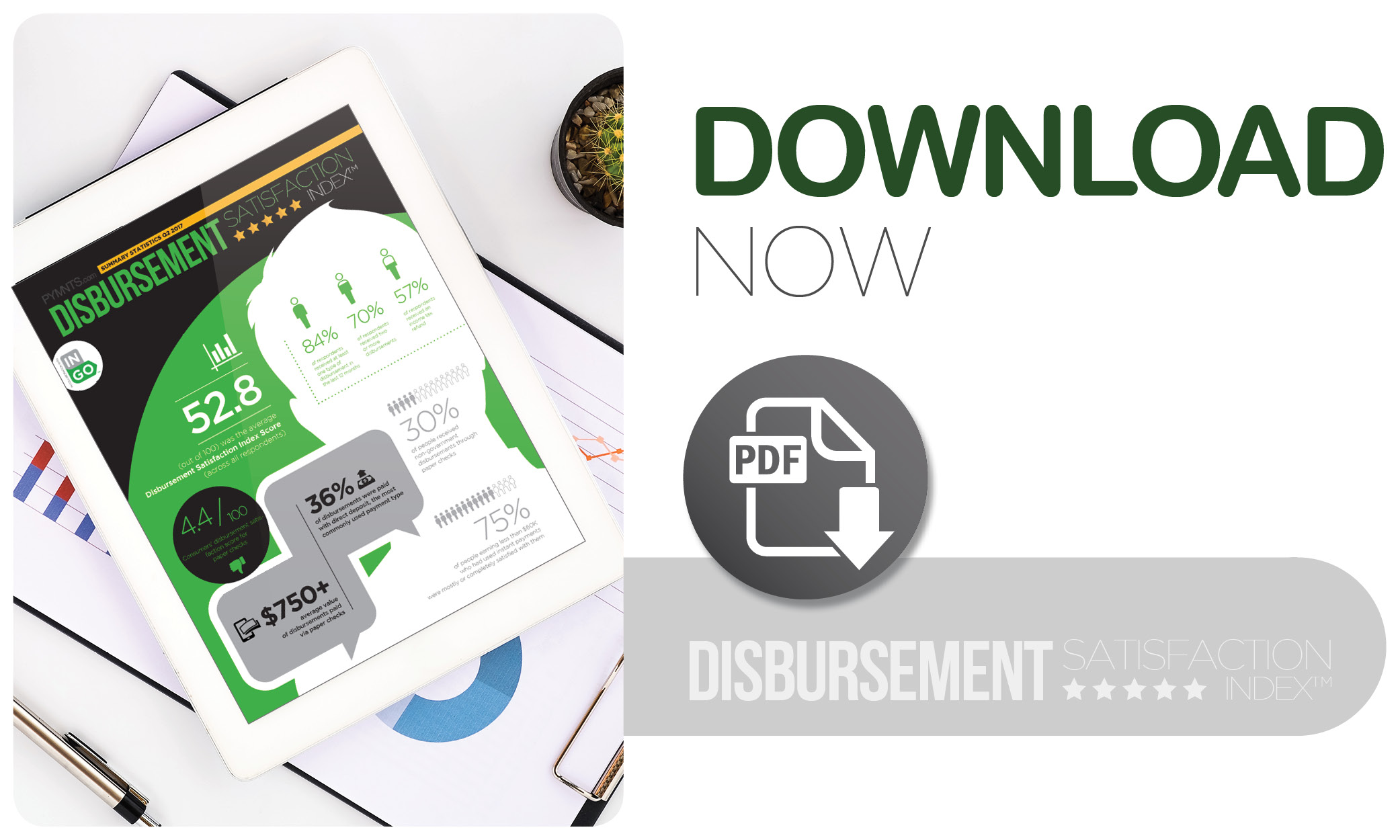How Ride-Hailing Apps Disburse Payments

They’ve reigned for decades, but checks’ days atop the world of disbursements are numbered – or they should be. The inaugural PYMNTS Disbursement Satisfaction Index™, in collaboration with Ingo Money, explores the disconnect between the 22 billion checks, valued at $22 trillion, written each year and consumers dislike of them – scoring a measly 4.4 out of 100 in the Index. For all the findings and analysis, including 2,243 data points and a deep dive into the latest innovations in ride-sharing disbursements, check out the Index. #KillTheCheck.
Ride-hailing apps Uber and Lyft may have bolstered their relationships with consumers, but when it comes to drivers, their dealings have been testy.
From protests over benefits to unfair compensation, many issues have long been a source of contention between the ridesharing companies and their driver communities. In response, over the last few years, both have tweaked how and when their drivers get paid.
To gauge drivers’ satisfaction with the payment platforms of the two companies, PYMNTS conducted a series of interviews with Lyft and Uber drivers based in Portland, Oregon, one of the fastest-growing U.S. rideshare markets. The drivers’ names have been changed to protect their identities.
When Is Payday?
Be it through Uber or Lyft, ridesharing drivers today command how often they would like to be paid.
The two ride-hailing giants maintain a standard pay schedule, which allows drivers to log hours over a week-long period, then choose how many of those hours they would like paid out when the period ends. On Uber’s platform, the pay cycle restarts every Monday at 4 a.m., and 5 a.m. on Lyft’s.
There is, however, interest in receiving instant payments. Nearly 36 percent of freelance workers earning less than $20,000 annually said they want to be paid instantly, and 33 percent in the $20,000 to $40,000 income bracket expressed the same, according to the findings of the latest Disbursement Satisfaction Index.
Those statistics are also reflected in how ride-hailing companies have revamped their payments processes to attract larger pools of drivers.
In late 2015, Lyft rolled out Express Pay, an instant disbursement option for its drivers. Uber quickly followed suit, debuting a similar feature known as Instant Pay. Typically, drivers who choose the instant pay option on either platform can see funds directly deposited into their bank accounts within minutes.
However, if drivers elect to use the instant pay option on either platform, they incur a 50-cent fee for each instant disbursement. While it may be a small fee, if drivers are making several instant-pay withdrawals per week, those charges can quickly add up. Nonetheless, for some drivers, the time saved is worth accruing slightly less money.
“I’d like to see us not get charged,” said Eric, a rideshare driver. “But it’s better than waiting until the middle of the week to get paid.”
Most drivers, however, seem to prefer the less costly, albeit slower, option. Jordan, a 36-year old full-time driver who, along with his fiancée, uses income from Uber to support his family, is one of them.
“Traditionally, I have always preferred to stick with the default process,” he said. “But, more recently, I have [used the instant payment option] to make the payment on a new car I bought in May.”
Mostly Content…
Of the four rideshare drivers with whom PYMNTS spoke, all said they were satisfied with the process of getting paid by Uber or Lyft.
That was especially true for 38-year-old Denise, who only drives for rideshare services part-time and doesn’t fully rely on the income to support herself. Denise, who drives one or two days per week, uses the instant payment option to get paid at the end of each day she’s on the road – and the fee hasn’t slowed her down yet, she said.
Josh, 35, who also drives part-time, said his experience on ridesharing platforms has been “pretty good in terms of payment.” Eric agreed, noting that while he wouldn’t mind the removal of the service fee for instant-pay transactions, the platform’s disbursement methods “work pretty nicely” for him.
…With Some Complaints
But while drivers like Denise said they would like “no changes” to the payment process of Lyft and Uber, others didn’t have quite as high employee satisfaction.
Most complaints centered around the speed of payment and the fees associated with receiving
payments more quickly. For Josh, getting paid via Uber or Lyft’s standard weekly payment option is good enough, but he would like to see payments disbursed into his account within 24 hours rather than the current standard 48 hours.
Drivers also had issues with the schedule surrounding weekly payments. Eric, who drives several times per week and typically uses the weekly payout option – with occasional instant-pay withdrawals – said bugs in the software can sometimes cause payments to fail, forcing drivers to wait for the next weekly payday to come around to see funds. And those paydays are crucial for Eric, as he uses his rideshare income to help support his family after losing his full-time job as a driver for a big-name delivery company.
“The income from Uber and Lyft has been a godsend for me,” he said. “I’m only 31, but I’m disabled with [a] degenerative disc disease, issues with my left leg and a metal plate in my right ankle, which meant no one would hire me.”
And sometimes those bugs can mean drivers have to wait even longer for big paydays, said Jordan. Unlike Lyft, he explained, which allows drivers to choose to cash out last week’s earnings up until the moment the next payment is transferred, Uber requires drivers to select which hours will be paid out by its weekly deadline of Monday at 4 a.m., which can pose issues for drivers working during that time.
“Often, I am actively working during the transaction [time], trying to add every little bit I can to my weekly earnings,” Jordan explained. “Last week, I was about to transfer about $700 at 3:15 a.m., but another ride came in, which locked me out of the payment screen. Before I dropped them off, another ride stacked onto that, and then another onto that. By the time I was ride-free, it was after 4 a.m., and I had lost my cash-out ability and had to wait until the next pay period.”
All in all, however, drivers seem content with the dual-option payment model currently offered by the two companies. It gives them the flexibility to get paid in a way that best suits their long-term needs and current financial situations.
“Personally, I only [use the instant-pay option] once or twice a month, as I’m content with the standard deposits, but I know plenty of drivers who cash out on a daily basis,” Jordan said. “I think the system right now works because each driver can make that choice and adapt their payday to their own needs.”
While the current payment disbursement methods seem to be satisfying for most, it remains to be seen how Uber and Lyft will further modify their payments platforms to stay competitive and continue to nip at each other’s heels.
To download the inaugural issue of the PYMNTS Disbursement Satisfaction Index™, in collaboration with Ingo Money, click the button below.
The PYMNTS Disbursement Satisfaction Index™, in collaboration with Ingo Money, is designed to help measure consumer satisfaction with various disbursement methods, including paper checks, instant credit, non-instant credit and direct deposits. The Index offers a microscopic look at the state of consumers’ satisfaction with how they receive disbursements.
